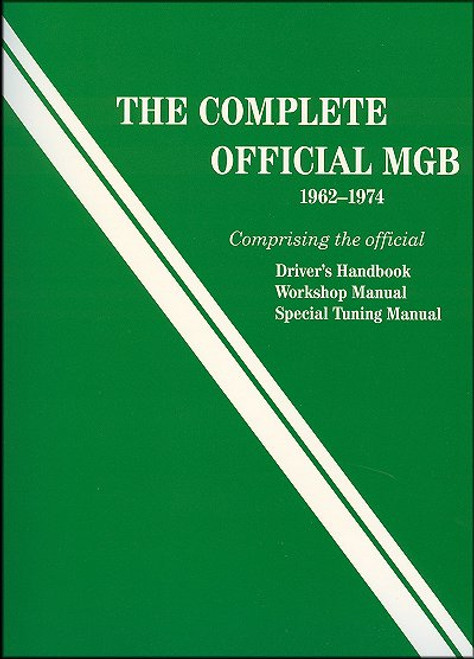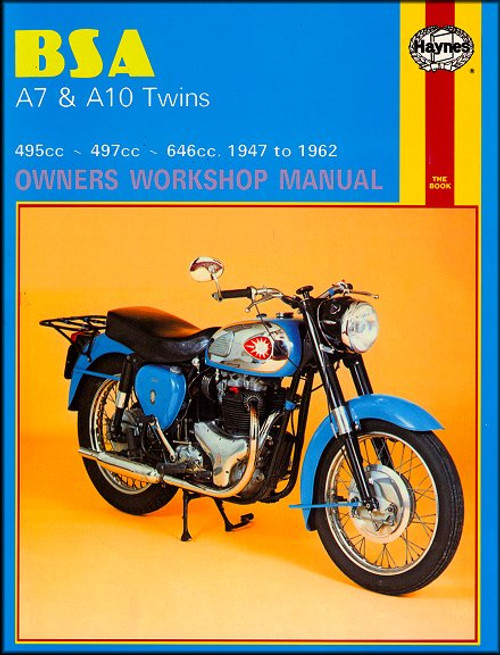If you are the lucky owner of a 1962 through 1974 MGB automobile, the official MGB Repair Manual provides complete coverage for U.K. and U.S. models. The manual was prepared with the cooperation of British Leyland Motors and gives the MGB do-it-yourself owner, complete and official maintenance and repair information. This book also includes the original driver's handbook provided with new MGB cars. But the main subject of the book is the workshop/repair manual portion, which comprises the majority of the book. The manual covers all MGB systems, including emission control information for MGBs manufactured specifically for the U.S. market. A complete illustrated catalog of special tools is also included. Engines covered by the MGB repair manual:
Book Excerpt: The Complete Official MGB: 1962-1974 Driver's Handbook, Workshop Manual, Special Tuning Manual THE CLUTCH
THE ELECTRICAL SYSTEM
- 18G, 18GA, 18GB, 18GD, 18GF
- 18GG, 18GH, 18GJ, 18GK (Standard, Overdrive)
- 18V 581F, 18V 581Y (Standard)
- 18V 582F, 18V 582Y (Overdrive)
- 18V 583F, 18V 583Y (Automatic)
- 18V 584Z (Standard)
- 18V 585Z (Overdrive)
- 18V 672Z (Standard)
- 18V 673Z (Overdrive)
Book Excerpt: The Complete Official MGB: 1962-1974 Driver's Handbook, Workshop Manual, Special Tuning Manual THE CLUTCH
GENERAL DESCRIPTION The clutch mechanism is hydraulically operated and consists of a driven plate, a pressure plate, and a diaphragm spring cover assembly. The cover is bolted to the flywheel and encloses the driven plate, pressure plate and diaphragm spring. The hydraulic system comprises a master cylinder coupled to a slave cylinder which operates the clutch release mechanism.
CLUTCH ASSEMBLY The driven plate comprises a splined hub connected to a flexible steel plate by a spring mounting. The annular friction facings are riveted to a plate and damper springs are assembled around the hub to absorb power shocks and torsional vibration. The diaphragm spring is interposed between two annular rings which provide fulcrum points for the diaphragm when it's flexed. The rings and the diaphragm are located and secured to the cover by nine equally spaced rivets. Three clips that engage the outer edge of the diaphragm are bolted to the pressure plate. The bolts pass through three straps which are riveted to the inside of the cover; the straps prevent the diaphragm and the pressure plate from rotating in relation to the cover. The release plate is secured directly to the diaphragm and is an integral part of the clutch cover assembly. On early cars the release plate is retained with a circlip and can be removed when the circlip is released. The release bearing is graphite and is mounted in a cup which fits into the fork of the clutch withdrawal lever. The cup is held in position by two spring retainers.
REMOVING Remove the engine as described in Section A.21. Loosen each of the bolts securing the clutch assembly to the flywheel by slackening them a turn at a time until spring pressure is released. The clutch cover can now be disengaged from the dowels on the flywheel and the assembly removed.
DISMANTLING On earlier cars remove the circlip securing the release plate to the diaphragm and lift the plate from the diaphragm.
THE ELECTRICAL SYSTEM
ALTERNATOR (LUCAS TYPE 16ACR) The construction of the model 16ACR alternator is similar to the 15AC as illustrated in Fig. N.25, except that a voltage regulator of micro-circuit construction is incorporated on the slip-ring end casing (see Fig. N.29. The procedure given for removing, testing, and dismantling the 16AC alternator in Section N.25, operations (9) to (36), should be followed. For regulator removal see operations (17) to (18) of this Section. TESTING IN POSITION OUTPUT TESTSubject: 1962, 1963, 1964, 1965, 1966, 1967, 1968, 1969, 1970, 1971, 1972, 1973, 1974 Complete Official MGB Driver's Handbook, Workshop Manual, Special Tuning Manual. ISBN-10: 0837601150 |ISBN-13: 9780837601151 | Bentley X115
- Check that the fan belt is correctly tensioned and that all charging circuit electrical connections are secure.
- Run the engine at fast idle speed until normal operating temperature is reached.
- Ensure that the battery is fully charged ; if not, fit a slave battery.
- Disconnect both connector blocks from the alternator.
- Switch on the ignition and connect a voltmeter, negative to earth positive lead to each cable connector tag of the two connector blocks in turn. If battery voltage is not registered at any cable, locate and remedy the fault.
- Remove the alternator end cover.
- Bridge the regulator green connector 'F' to earth (see Fig.N.29).
- Refit the three-way connector block to the alternator. Connect an ammeter in series with the positive lead of the two-way connector block and the positive output tag of the alternator.
- Start the engine and run at 3,300 r.p.m. The ammeter should read 34 amps. If the correct alternator output cannot be obtained, replace or service alternator.










